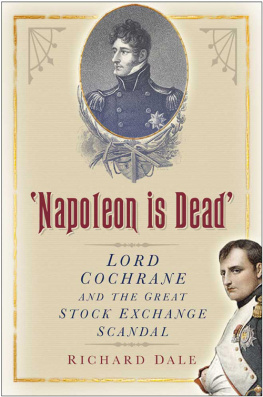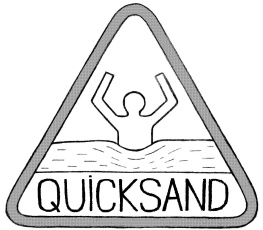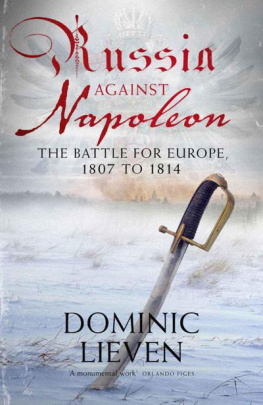AUTHOR'S PREFACE
THIS volume will appear almost precisely one hundred years after the commencement of the campaign which it describes.
As in the case of the author's four previous histories of Napoleon's campaigns, it deals only with the purely military side of the war, politics being referred to only in so far as they actually influenced directly the course of military operations. Further, it is confined to the operations in which Napoleon was personally and directly engaged. Therefore, no attempt is made to deal with the campaigns of Soult and Suchet against Wellington, with the blockade of Davout in Hamburg or of the other fortresses in Germany, with Maison's campaign in the Netherlands, with Eugene's in Italy, or even with Augereau's movements about Lyons. The latter, feeble though they were, certainly did exercise a considerable influence on the allied movements, especially in the end of February; but it was mainly unfounded alarm which influenced Schwarzenberg, and the details of Augereau's advance and retreat are of little interest.
There appears to be, at present, no modern work in English giving anything like a full history of this campaign, except the lectures of Captain Jones published in 1868. Being addressed to Sandhurst cadets they necessarily do not go into much detail. When they were delivered, even Napoleon's correspondence was scarcely published in full, and none of the many documents which have since been disinterred from the various record offices of Europe were available.
In French there are several excellent histories, notably the "1814" of the late M. Henry Houssaye, and the admirable volumes of Commandant Weil, which represent the result of years of assiduous search in the archives of Paris, St. Petersburg, and Vienna. Captain Hulot, of the 45th Infantry, has also published a useful volume, "La Manuvre de Laon." In German there are contemporary accounts by Mffling and Clausewitz, and a translation of Danilewski's Russian work, which has also been translated into English. Two volumes (by General Janson) of the great "Geschichte der Befreiungskriege, 1813-1815" deal with 1814. That author naturally had freer access to German records than Colonel Weil, but, save in this respect, little has been added to the French work.
The author has been over the greater part of the theatre of war, and, in the case of the country between Soissons, Laon, and Berry-au-Bac, had the advantage of seeing 10,000 French troops of the present day manuvring with general ideas very similar to those of Napoleon of March 7th-9th, 1814. The whole thing was a vivid object-lesson in the difference between the simple training of a few weeks which enabled Napoleon to pit his recruits with success against the veterans of the allied armies, and the far lengthier and stricter training which alone can qualify men to meet the more exacting conditions of warfare in the twentieth century.
The author hopes the maps in the present volume will be found sufficient. The general map shows all but a very few of the names mentioned in the text. These will be found in the maps used for battles and the manuvres at and south of Laon. These latter are reproductions of the French staff map on a scale of _ 1___ .
80000
The country in most of these places has changed little in general character, and it is only necessary to eliminate the railways, and to remember that many of the roads now metalled were not so in 1814. Their general line is unaltered.
The author takes this opportunity of gratefully acknowledging the courtesy of the Geographical Department of the French General Staff in permitting him to reproduce extracts from their map.
The numerous small plans showing troop positions on various dates do not pretend to accuracy or uniformity of scale, but it is hoped that, in conjunction with the general and local maps, they will afford a clear view of the general situation on almost every important day of this short campaign. On them place names are shown, as on the general map, in italics, whilst names of commanders, or numbers of corps, appear in Roman capitals and figures. The use of commanders' names generally has been preferred; for, in Napoleon's army of 1814, the units were often so small as to be likely to give rise to misapprehension if described as corps, divisions, etc.
In all maps the top and bottom are respectively north and south, and French troops are shown by solid, whilst the allies are represented by open rectangles.
F. L. P.
31st October, 1913.
CONTENTS
MAPS AND PLANS
(AT END OF VOLUME)-
Not Included here due to their size
SHEET I
General Map of the Theatre of War
SHEET II
(a) Positions, evening 28th January
(b) Positions, evening 31st January
(c) Battlefield of Brienne and La Rothire
(d) Battle of La Rothire Positions about 2 p.m.
(e) Battle of La Rothire Positions about 8 p.m.
(f) Positions, evening 6th February
(g) Positions, evening 9th February (h) Positions, evening 11th February
(i) Battlefields of Champaubert, Montmirail, and Vauchamps
(j) Positions, evening 16th February
(k) Battlefield of Montereau
(l) Positions, evening 24th February
(m) Positions, evening 26th February
SHEET III
(a) Napoleon and Blcher(1) evening 1st March, (2) evening 5th March
(b) Napoleon and Blcher Positions, evening 6th March
(c) Battlefields of Craonne and Laon
(d) Battle of Craonne Positions at 3 p.m.
(e) Positions, evening 7th March
(f) Battle of Laon, 10 p.m., 9th March
(g) General Positions, evening 17th March
(h) Napoleon and Schwarzenberg, evening 19th March
(i) Battlefield of Arcis-sur-Aube
(j) Positions, evening 24th March
_______________________
All Maps and Plans are due north and south.
French Troops indicated by solid rectangles.
Allied Troops indicated by hollow rectangles.
Names of Commanders and numbers of corps, etc., in Roman capitals and figures.










